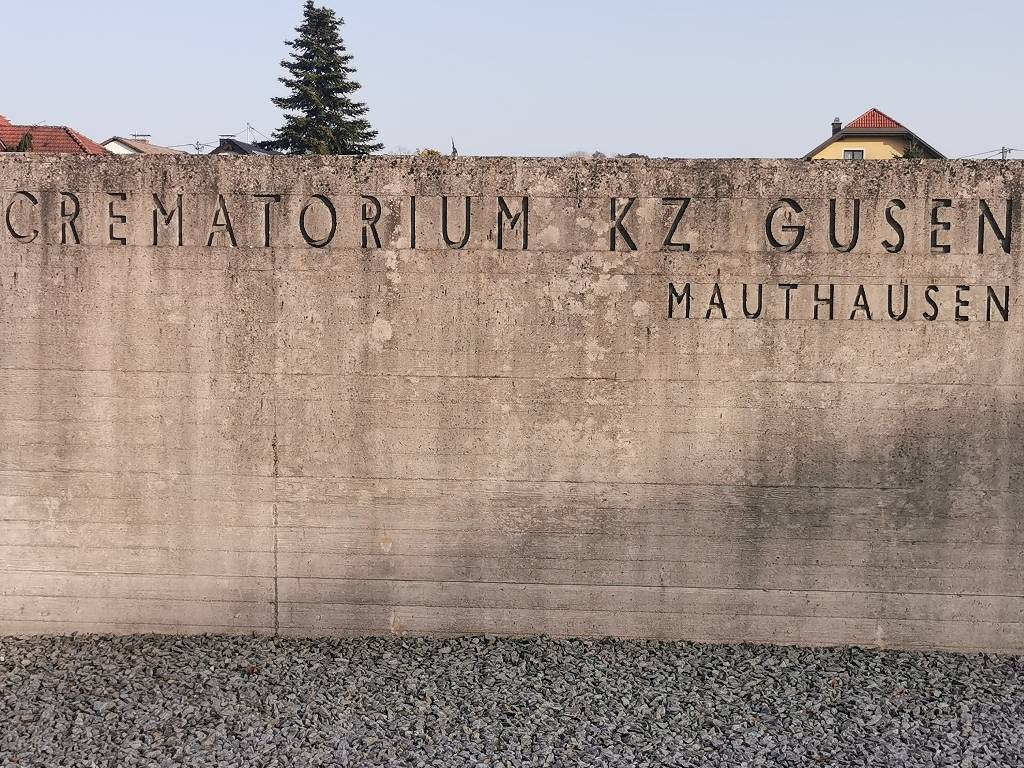A milestone for memorial culture in Austria: Purchase of land that was part of the former Gusen concentration camp
05.05.2021
The Mauthausen Memorial welcomes the purchase of land that was part of the former Gusen concentration camp. This represents the next decisive step in the development of the Gusen Memorial.

Today, these plots of land are the location of significant structural remains of the former Gusen concentration camp, for example the former roll call area, two SS barracks and the rock crusher. The integration of these important sites into the existing Gusen Memorial sends an important signal on the part of the Republic of Austria with regard to the commemoration of the more than 35,000 victims of this branch camp of the Mauthausen concentration camp, a camp that remained forgotten in Austria for a long time. Unlike the Mauthausen concentration camp, which became a memorial museum, the Gusen concentration camp was soon dismantled and partly built over with a housing estate. At present, only the Memorial Gusen, established by international survivors’ associations, and the adjoining visitor centre point to the existence of a camp of this magnitude in Gusen.
“The positive conclusion of the first round of purchase negotiations by the Republic of Austria is therefore a milestone in memorial culture and in the ongoing work on the history of National Socialism in Austria. The Mauthausen Memorial will do all it can to ensure that the development of these new sites takes place with the involvement of regional, national and international stakeholders. The concerns of the local population must also be taken into account regarding the expansion of the memorial site, which is located in the middle of the municipality of Langenstein”, explained Barbara Glück.
The Mauthausen Memorial, with its organisational know-how and expertise in terms of the subject matter, stands ready to oversee the development of this significant memorial site in collaboration with regional, national and international partners, and hopes to find a broad basis of support within the Awareness Region Mauthausen – St. Georgen – Langenstein. “The agreement reached between the Republic of Austria and the land owners, 76 years after the liberation, represents a unique opportunity to establish a contemporary memorial site as befits the historical dimensions of this camp. It sends an important signal to all survivors and is a dignified place of remembrance for the countless victims”, said Glück.
The former Gusen branch camp is currently the focus for work at the Mauthausen Memorial. A progressive web app will shortly be presented, which documents and provides historical contextualisation for the remaining traces of this camp throughout the region. A new guided tour format for visitors that links the former Gusen and Mauthausen concentration camps, highlighting differences and similarities along the way, is in preparation. Under the hashtag #bildungsarbeitdigital, every week the memorial museum posts a new a video with facts and history about the former Gusen concentration camp.
The existing Gusen Memorial was initiated by international survivors’ organisations. The purchase of land now concluded by the Republic of Austria emphasises the national and international significance of the memorial site at Gusen.
On 5 May 1945 soldiers of the US Army liberated over 20,000 concentration camp prisoners in Gusen, the majority of whom were severely undernourished and suffering from catastrophic ill health. At that point in time, more people were imprisoned in this little-known concentration camp than in the Mauthausen main camp. Today only a few structural remains point to the existence of a camp of this size. At least 71,000 people were deported to Gusen, more than half of whom died there.